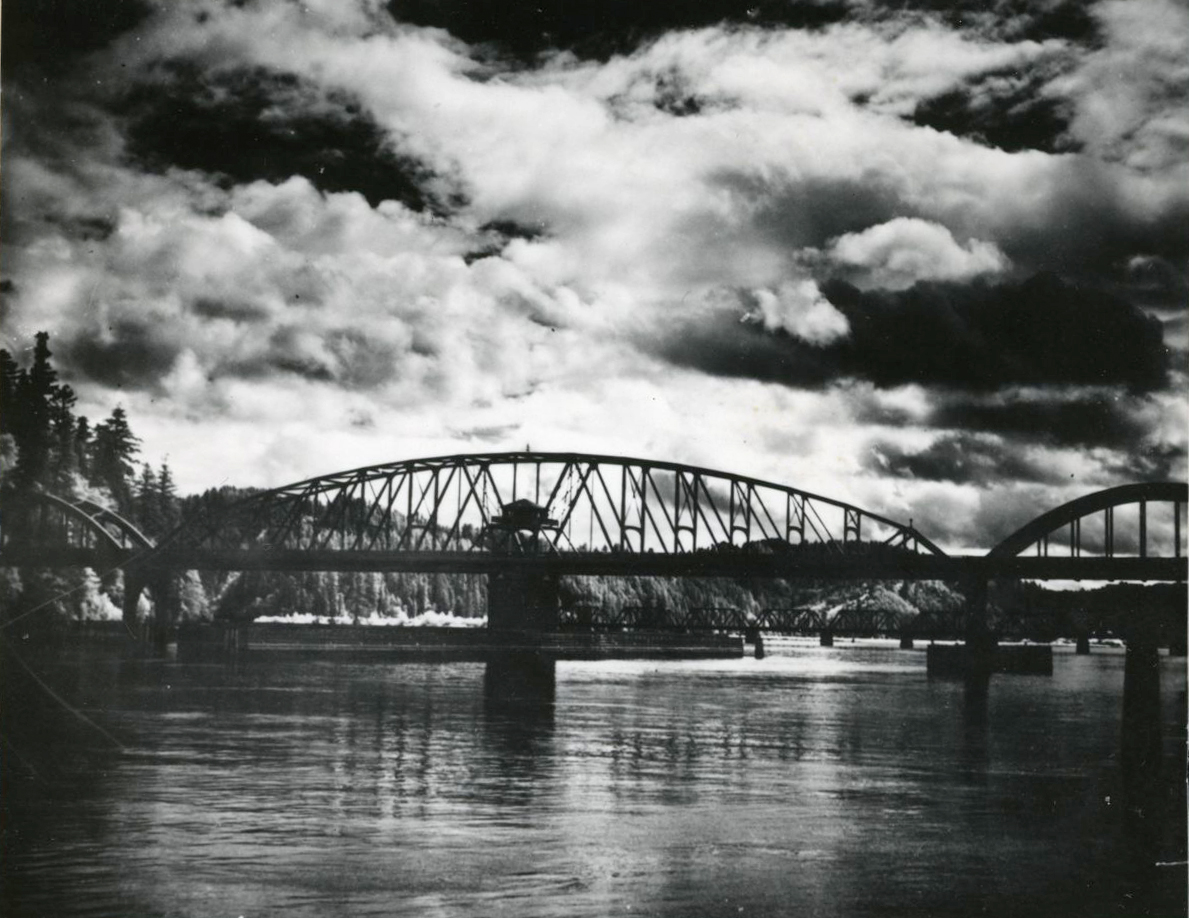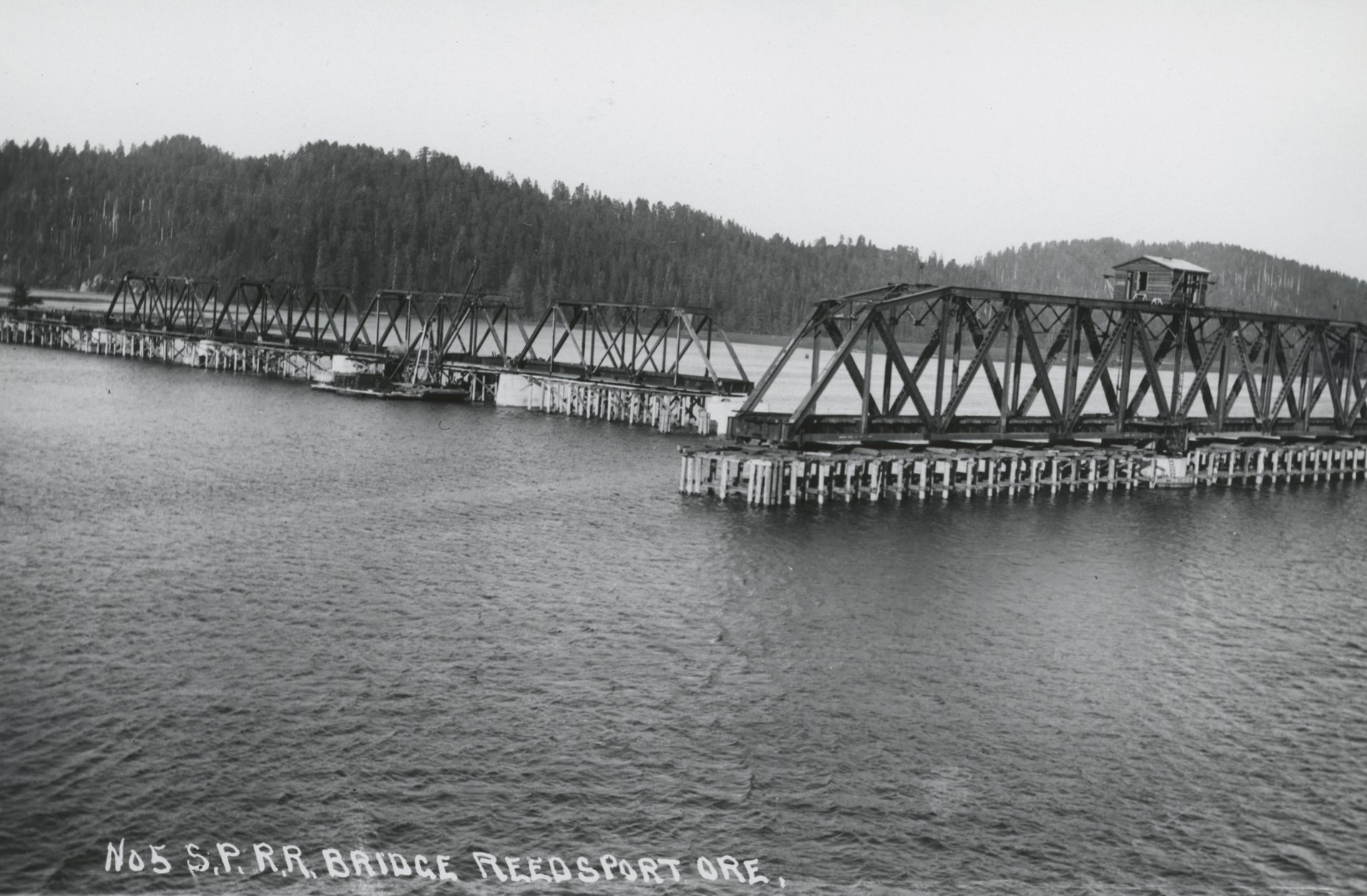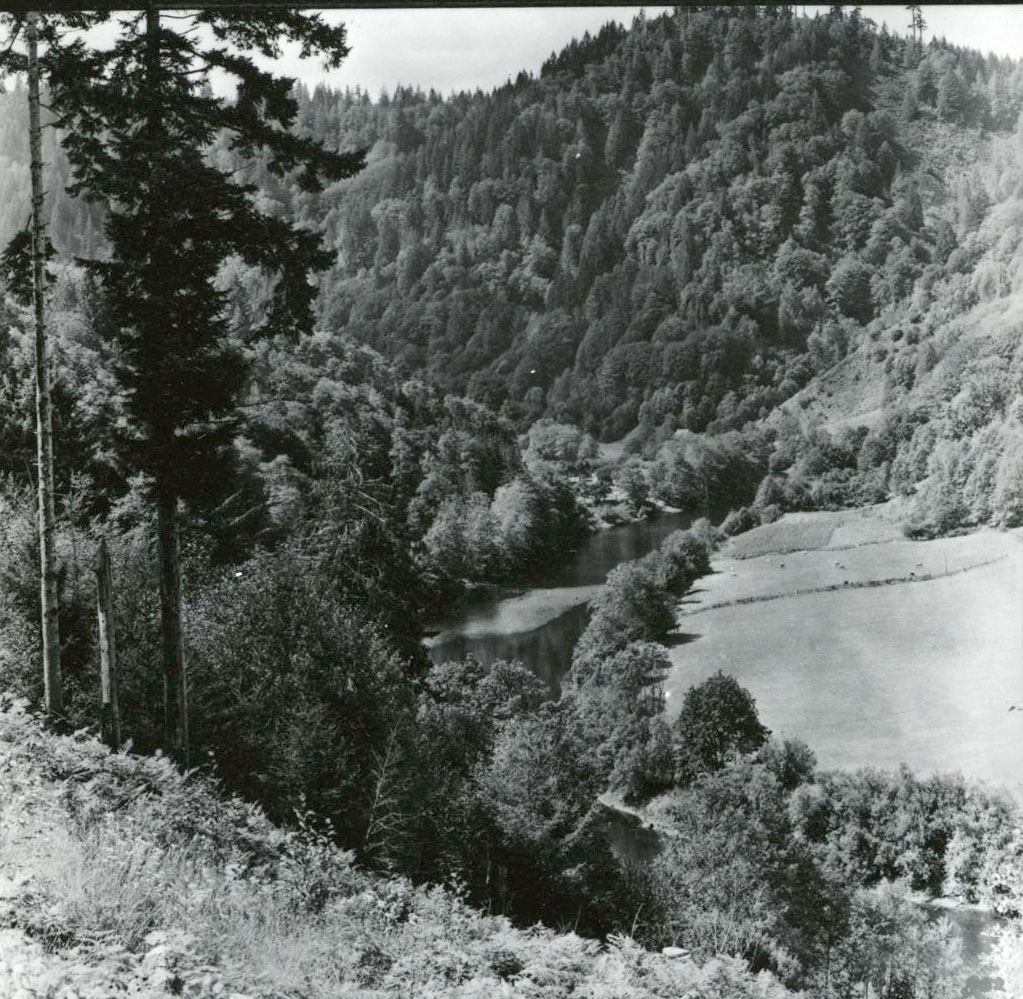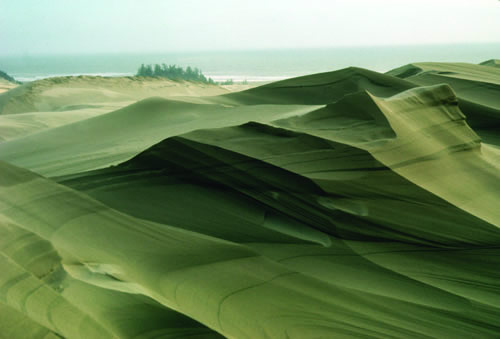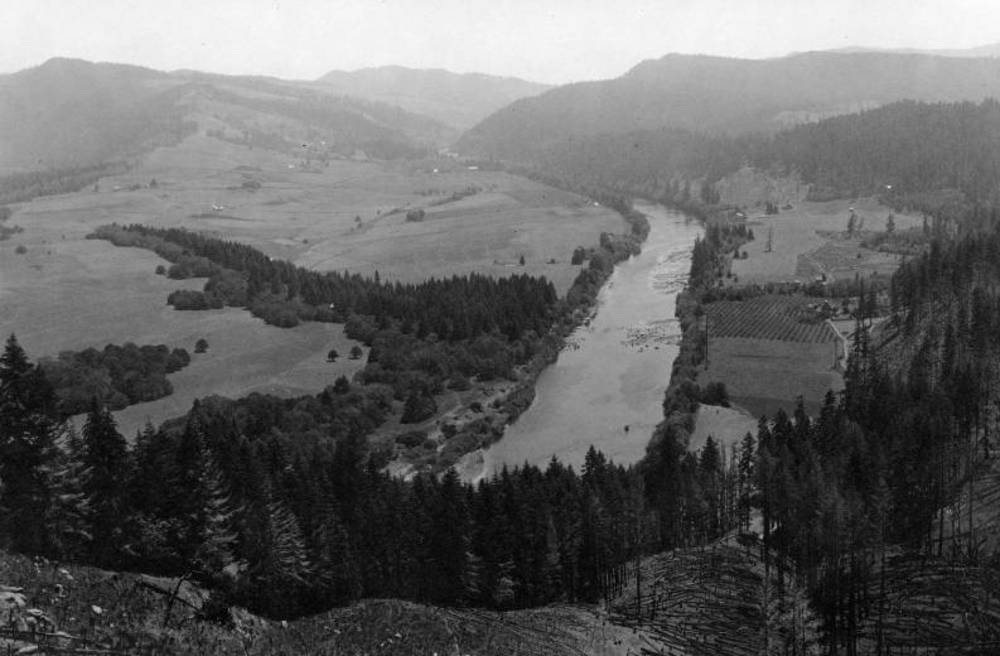In many ways, the story of Reedsport is a microcosm of the story of Oregon. Since the mid-1800s, the town has seen economic booms driven by abundant natural resources and has endured long periods of bust as those resources dwindled and priorities changed. Reedsport has both flourished and floundered. The town is about two miles up the Umpqua River from Gardiner, south across the Umpqua River Bridge near the mouth of the Smith River. Beginning in 1852, homesteaders resettled the area around what would become Reedsport, but the town was not platted and named until about 1900. The post office was established in 1912 and the town was incorporated in 1919.
Long before white settlers arrived in the early 1850s, the region was the homeland of the Siuslaw-speaking people who fished the salmon runs on coastal rivers and built plankhouses from local cedar. In 1861, as an increasing number of whites settled on the south coast, the U.S. Army removed the Siuslawans and Lower Umpquas to the Alsea Subagency. Many tribal members returned to the Reedsport area after 1876, and by 1916 the Lower Umpqua, Coos, and Siuslaw tribes had established a confederated government. Although the tribes opposed termination, they were part of the Western Oregon Termination Act of 1954. The Confederated Tribes of the Lower Umpqua, Coos, and Siuslaw was re-recognized in 1984; tribal headquarters is in Coos Bay, about thirty miles south of Reedsport.
The Umpqua is the second largest river (after the Klamath) between the Sacramento and the Columbia Rivers. Because the river is easily navigable and its mouth is not difficult to cross, the location was a good choice for settlement. The first ship to attempt to cross from the ocean into the Umpqua River was the Bostonian, which arrived on October 1, 1850, with a captain and crew seeking trading opportunities. The ship foundered and was wrecked, but no lives were lost and most of the cargo was saved. Just ten days later, the Kate Heath, a ship carrying members of the Klamath Exploring Expedition who intended to build a settlement on the river, successfully made the crossing. The crew of the Bostonian would establish the town of Gardiner nine miles upriver, while the Kate Heath sailed to the head of the tidewater where its passengers helped establish Scottsburg.
Warren Reed, a local landowner and businessman, led efforts to build a town between the Umpqua River and the Rainbow Slough, where the Elmore Packing Co. had built a fish cannery in 1910. He named the town Reedsport for his uncle Alfred W. Reed, a prominent early settler of Gardiner.
During the late nineteenth and early twentieth centuries, commercial fishing operations netted huge numbers of salmon from the Umpqua River, which workers processed and canned on the Reedsport waterfront. Ships sailed upriver to Reedsport and took on the canned salmon for export. The waterfront docks and fish-processing plants were built on stilts and pilings over a marshy tidal flat. The area was filled in by 1927 and now makes up much of downtown Reedsport.
Eventually, the “green gold” of the Coast Range forests became the driving force of the Reedsport economy. In 1912, the arrival of the Southern Pacific Railroad brought about an explosion of logging activity on the lower Umpqua. Several mills were built near the town, and huge log rafts crowded into the river along the waterfront. By the 1950s, logging dominated the local economy. While fishing and farming provided important opportunities, timber fallers, choker setters, equipment operators, truck drivers, and millwrights put the bread on Reedsport tables. During those years, the Lower Umpqua also experienced the beginnings of a recreation-based tourist industry, which remains vital today.
Two events during the 1960s had a lasting impact on the Reedsport community. In 1963, International Paper opened its Gardiner paper mill, which became one of the largest employers on the Oregon coast, with a workforce reaching more than seven hundred. By 1990, nearly 4,900 people lived in Reedsport. The mill was shuttered in 1999, and the area’s economy is still recovering from the loss. By 2020, the population of Reedsport had declined to 4,310. The second event was the Christmas Flood of 1964, which inundated downtown Reedsport—and most other coastal towns—and damaged almost every building. In 1968, the Army Corps of Engineers encircled the part of town that had flooded with a levy system.
Congress created the Oregon Dunes National Recreation Area, with its headquarters in Reedsport, in 1972. The dunes attract thousands of tourists each month, and the recreation industry has become the most important component of the region’s economy. ATV riders, fishermen, crabbers, and campers visit the area year-round, and more than ten thousand people attend the DuneFest each summer. Reedsport hosts the Oregon Divisional Chainsaw Carving Championships each June, attracting carvers from all over the world, and vintage car owners and thousands of enthusiasts attend Kool Coastal Nights in the fall.
-
![]()
Aerial photo of Reedsport, 1942.
Courtesy Oregon Hist. Soc. Research Lib., 006319
-
![]()
Reedsport.
Courtesy Oregon Hist. Soc. Research Lib., 17736
-
![]()
Reedsport.
Courtesy Oregon Hist. Soc. Research Lib., 17725
-
![]()
Reedsport, waterfront.
Courtesy Oregon Hist. Soc. Research Lib., ba0131165
-
![]()
Umpqua River Bridge, 1936.
Courtesy Oregon Hist. Soc. Research Lib., 015343
-
![]()
Reedsport, railroad bridge.
Courtesy Oregon Hist. Soc. Research Lib., 17734
-
Oregon Dunes, July 2011.
Photo James V. Hillegas
Related Entries
-
![Alsea Subagency of Siletz Reservation]()
Alsea Subagency of Siletz Reservation
In September 1856, Joel Palmer, the Superintendent of Indian Affairs fo…
-
![Coos Bay]()
Coos Bay
The Coos Bay estuary is a semi-enclosed, elongated series of sloughs an…
-
Oregon Dunes
Miles and miles of windblown sand. The Oregon Dunes stretch for fifty-f…
-
![Oregon Dunes National Recreation Area]()
Oregon Dunes National Recreation Area
Created by Congress in 1972, the Oregon Dunes National Recreation Area …
-
![Umpqua River]()
Umpqua River
The Umpqua River, approximately 111 miles long, is a principal river of…
Related Historical Records
Map This on the Oregon History WayFinder
The Oregon History Wayfinder is an interactive map that identifies significant places, people, and events in Oregon history.
Further Reading
Beckham, Stephen Dow. Land of the Umpqua: A History of Douglas County, Oregon. Roseburg: Douglas County Commissioners, 1986.
Douthit, Nathan. Uncertain Encounters: Indians and Whites at Peace and War in Southern Oregon, 1820s-1860s. Corvallis: OSU Press, 2002.





